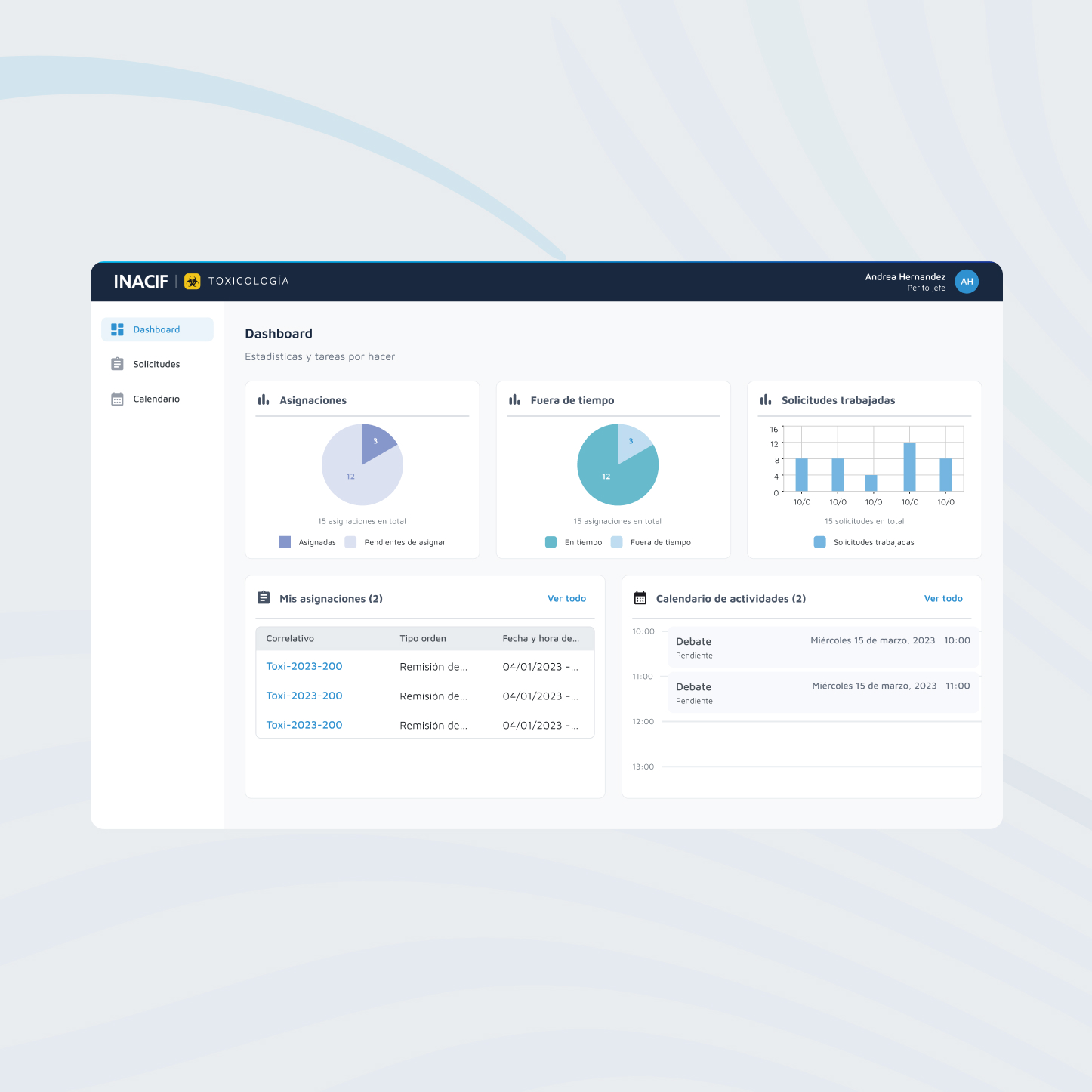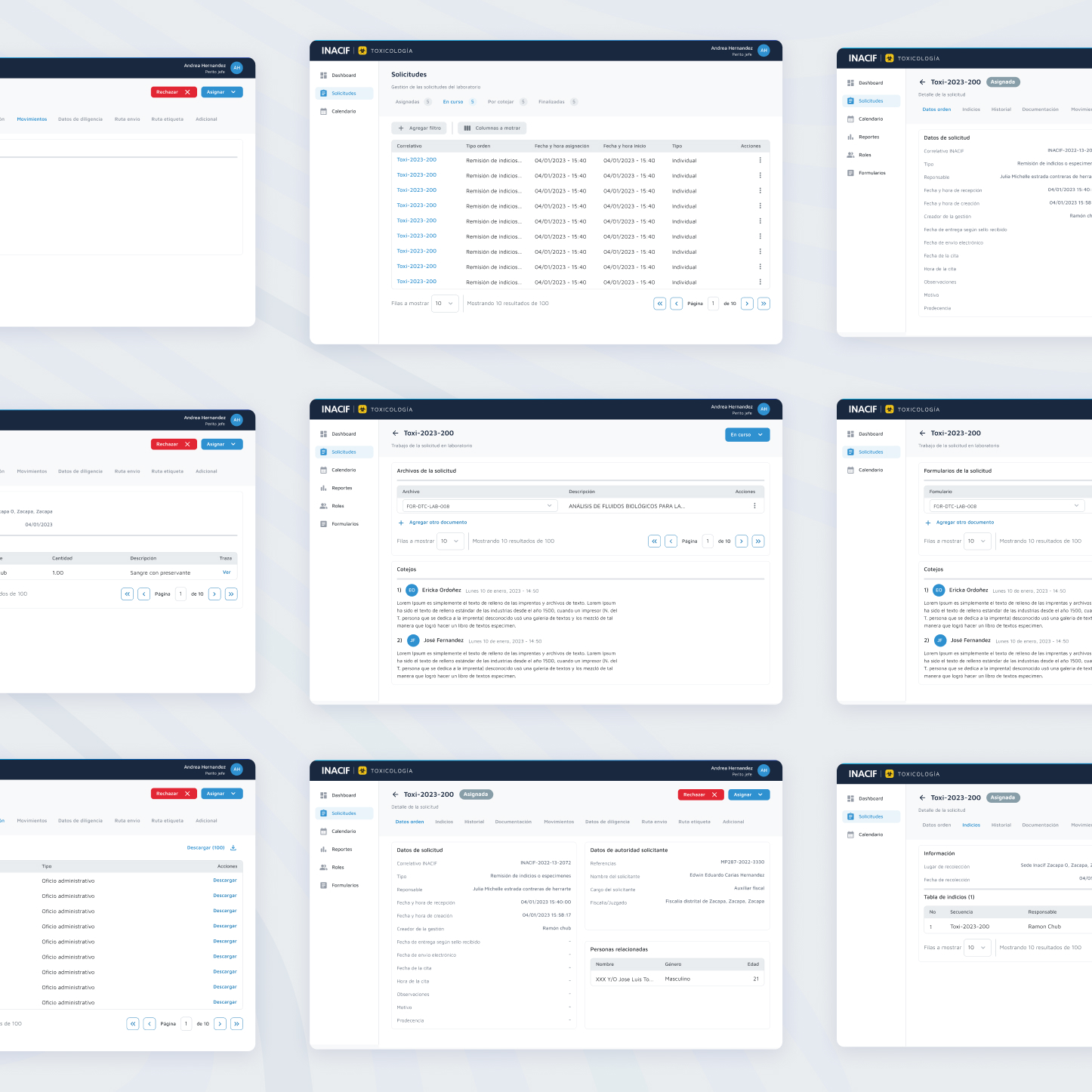


The main objective was the creation of three distinct systems, tailored to the specific needs of the Toxicology, Serology, and Physicochemical laboratories within INACIF. These systems aim to improve daily experience and work tools in each area, enabling streamlined processes, more effective control of evidence, and greater independence from the current system, SINAF. The implementation of an API is proposed to synchronize data between the new systems and SINAF, ensuring data integrity. Measurable goals include the effective development of the three systems, the progressive reduction of SINAF usage in the laboratories, user satisfaction with the new systems, and the configuration of standardized forms for efficient report generation in each specific area.





An institution with functional autonomy and independence that arose from the need to unify and strengthen forensic expert services in Guatemala, through the scientific development of its work as an autonomous institution, ensuring impartiality and reliability in technical scientific investigation, thereby contributing to the justice system.
The creation of three systems that coexist with the general system, SINAF. The goal is to ensure that information travels securely between the two systems, guaranteeing that requests and evidence information remain safe, while always aiming to streamline processes. To achieve the objectives of creating this system, the following challenges were faced: The connection from the new systems to SINAF through Keycloak increased the difficulty of implementing the roles and login system managed by SINAF. The creation of three independent systems that consume information from a single global system. Designing three customized systems tailored to each laboratory.


The implementation of an API is proposed to synchronize data between the new systems and SINAF, ensuring data integrity. Measurable goals include the effective development of the three systems, the progressive reduction of SINAF usage in the laboratories, user satisfaction with the new systems, and the configuration of standardized forms for efficient report generation in each specific area.
The software development project has been successfully completed, delivering three specific systems for the Toxicology, Serology, and Physicochemical laboratories at INACIF. These systems improve daily workflows and tools in each area, streamlining processes, strengthening control, and ensuring greater independence from the previous system, SINAF.
The implementation of an API to synchronize data between the new systems and SINAF has ensured data integrity. Achievements include the progressive reduction of SINAF usage in the laboratories, user satisfaction with the new systems, and the deployment of standardized forms for efficient report generation in each specific area. These results represent a significant advancement in process optimization and laboratory autonomy at INACIF.
